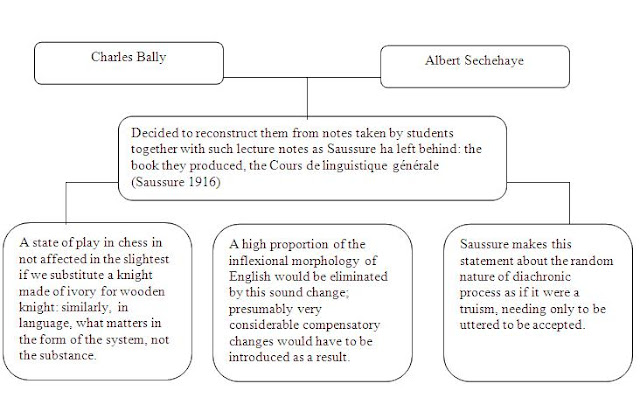The University of London was first established by a Royal Charter in 1836, which brought together in federation London University (now University College London) and King's College (now King's College London), to establish today's federally structured University of London.
The University of London owns a considerable central London estate of 180 buildings in Bloomsbury, near Rusell Square tube station.
Coat of arms
The University of London first received a grant of arms in April 1838. The arms depict a cross of St George upon which there is a Tudor rose surrounded by detailing and surmounted by a crown. Above all of this there is a blue field with an open book upon it.
In terms of heraldry the arms would be described as:
Argent, the Cross of St George, thereon the Union Rose irradiated and ensigned with the Imperial Crown proper, a Chief Azure, thereon an open Book also proper, Clasps gold
martes, 28 de febrero de 2012
domingo, 26 de febrero de 2012
PRAGUE SCHOOL SUMMARY
Prague School
Members
of the Prague School thought of language as a whole as serving a purpose, which
is a truism that would hardly differentiate them from others, but they analysed
a given language with a view to showing the respective functions played by the
various structural components in the use of the entire language.
Prague
linguistics, looked at language as one might look at a motor, seeking to
understand what the jobs various components were doing and how the nature of
one component determined the nature of others.
According
to Mathesius, the need for continuity means that a sentence will commonly fall
into two parts (which, may be, very unequal in length): the theme, which refers
to something about which the hearer already knows (often because it has been
discussed in immediately preceding sentences), and the theme, which states some
new fact about the given topic.
A
related point is that much Prague linguistics was actively interested in
questions of standardizing linguistics usage.
Jakobson
was one of the founding members of the Prague Linguistic Circle. He spent much
of the Second World War at the Ecole Nobre des Études which was established in
New York City as home for refugee scholars from Europe.
One
of the characteristics of the Prague approach to language was readiness to
acknowledge that a given language might include a range of alternative
“systems”, “registers”, or “styles”, where American Descriptivist tended to
insist on a treating a language as a simple unitary system.
A
prague linguist would be ready, indeed eager, to say that English has a system
of native phonemes which excludes even though that sound may occur in a
subsidiary stock of borrowed words, and that if the phonology of rapid English
differs their respective from that English spoken slowly then their respective
grammars should be kept distinct rather than merged together.
Saussure
stressed the social nature of language and he insisted that linguistics as a
social science must ignore historical data because for the speaker, the history
of this language does not exist- a point seemed undeniable.
miércoles, 15 de febrero de 2012
miércoles, 8 de febrero de 2012
miércoles, 1 de febrero de 2012
LINGUISTIC THEORY CONCEPTS
Linguistics: The scientific study of human language (Linguistics: An Introduction of Linguistic Theory. Victoria A. Fromkin)
Semantics: The study of meaning (Semantics Second Edition. F. R. Palmer)
Prescriptive Linguistics: Will judge the expression as constituting either “good” or “bad” grammar, and will condemn its use if it is seen to fail to measure up to the norms of the standard language. (University College London. G. Nelson)
Descriptive Linguistics: Will study the use of ain´t (as in, for instance, I ain´t ready yet) in terms of regional and social variation, in terms of the distribution of the usage in formal and informal contexts, and will perhaps also study the history and development of the expression. (University College London. G. Nelson)
Ethnography: Describes the History of the group, the geography of the location, kinship patterns, symbols, politics, economic systems, and the degree of contact between the target culture and the mainstream culture. (Ethnography, Step by Step Third Edition. David M. Fetterman)
Ethnolinguistics: The study of group´s experience of life as it is organized and expressed through the group´s language tools and as a science whose aim is examine the relationships between a language on the one hand and society and culture on the other. (Language, culture and identity. Philip Riley)
Sociolinguistics: The study of language in relation to society. (Sociolinguistics Second Edition. R. A. Hudson)
Generative Grammar: a precisely formulated set of rules whose output is all (and only) the sentences of a language -i.e., of the language that is generates. There are many different kinds of generative grammar, including transformational grammar as developed by Noam Chomsky from the mid-1959s. (www.britannica.com)
Universal Grammar: Is a theory in linguistics that suggests that there are properties that all possible natural human languages have. The theory suggests that some rules of grammar are hard-wired into the brain, and manifest themselves without being taught. (www.wikipedia.com)
Neurolinguistics: Studies the relationship of language and communication to different aspects of brain functions, in other words it tries to explore how the brain understands and produces language and communication. (Introduction to Neurolinguistics. Elisabeth Ahlsén)
Suscribirse a:
Comentarios (Atom)






